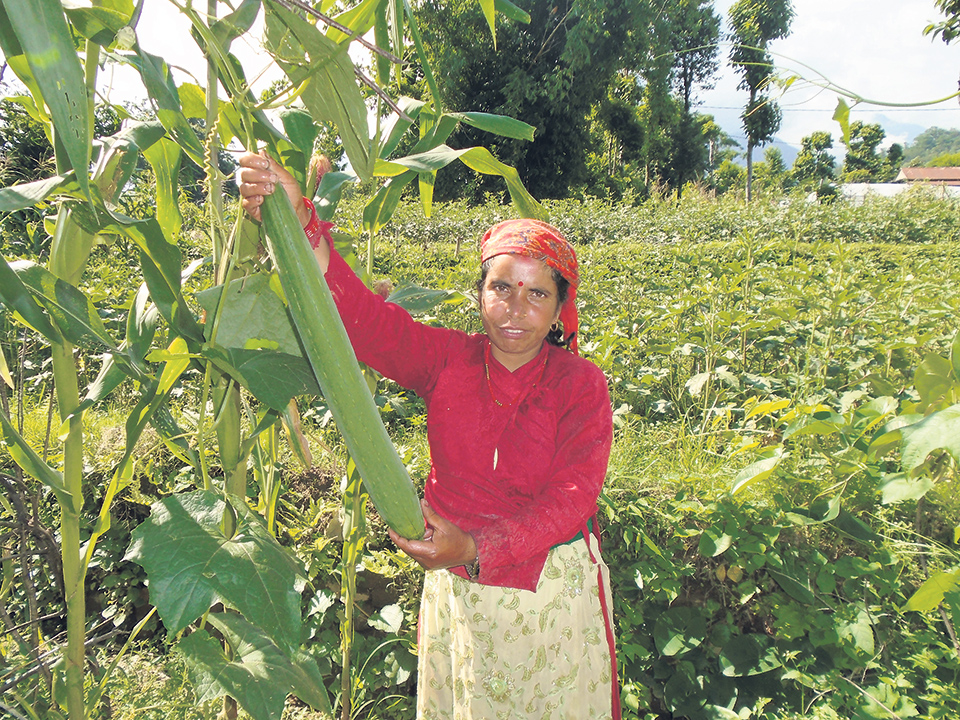
Agriculture is considered the main occupation of Nepalis. It is also considered a household enterprise and every member of the family have their role in agriculture. So the women are no exception.
Women play a significant role in agriculture and food production as they provide labor for agricultural operations like transporting manure, secondary field preparation, planting (transplanting), inter-culture operations, weeding and harvesting.
The post-harvest operations like drying, milling are the sole responsibilities of women. Likewise, Nepali women are also involved in rearing of livestock, feeding and heeding animals. They are also responsible for maintaining seed stock, sowing them in appropriate time and allocating the farm resources on farm.
However, it is seen that the involvement of women is greater on subsistence food production for minor crops. They generally don’t have equal access to land, water, training and credit as men.Participation of women is more than men’s in almost all the activities. Women are involved in tedious and time consuming chores such as weeding, milling, threshing while men are involved in heavy physical labor like plowing.
Although women’s involvement in agriculture is highest in Nepal among other South Asian countries, their role has remained unrecognized and underpaid. Women have virtually no ownership or control over land or other assets due to the prevalent patriarchal mindset.
But the scenario is changing with more than four million Nepali men working abroad. Women are left as the sole in-charge of the household and farms. Apart from sustainable farming, women are also involved in commercial cultivation like vegetable production, food processing like jam, jelly, juice and candy making. The ownership of land and house by females has also increased in the recent years.
Female led agricultural co-operatives have helped a lot in bringing out this transformation. These co-operatives help women raise finances that are needed for commercial farming. With the establishment of women farmers’ groups, the procurement of improved seeds and modern equipment has also become easier.
This empowered confident and self-reliant involvement of women in commercial agriculture has encouraged their managerial ability and their potential for economic prosperity. Women have also been investing their earnings to grow their enterprise. Also, remittance economy allows increased flow of cash in villages, improving women’s investment in agriculture. They are now receiving focus from governmental and non-governmental organizations as well as research and development projects.
Meanwhile, climate change has posed a risk to agriculture due to unpredictable rainfall pattern, drying of spring water and emergence of new diseases as well as pests. However, women farmers of Nepal are breaking with the tradition and are being involved in decision making process.
In Nepal, only nearly 15 percent women are involved in agricultural research sector. However the ratio of female students studying agriculture has now reached 40 percent. This shows a bright future for women in agriculture and a balanced share of both the genders in research as well as development.
Therefore, our traditional agro-ecological practices need to be changed and women-friendly as well as climate-smart technology should be developed. Restructuring policies and existing agricultural system while also addressing female participation in agriculture are must.
If government only reviewed and correct some ranking priorities, things could be better. If women are provided with adequate training, extension services, experts’ guidance and improved agriculture inputs, they can play an even stronger role in agricultural. Hence, agriculture is an engine to reduce poverty and hunger, and women are the secret weapon in the battle for food security.


Leave A Comment